By Jennie L. Ilustre
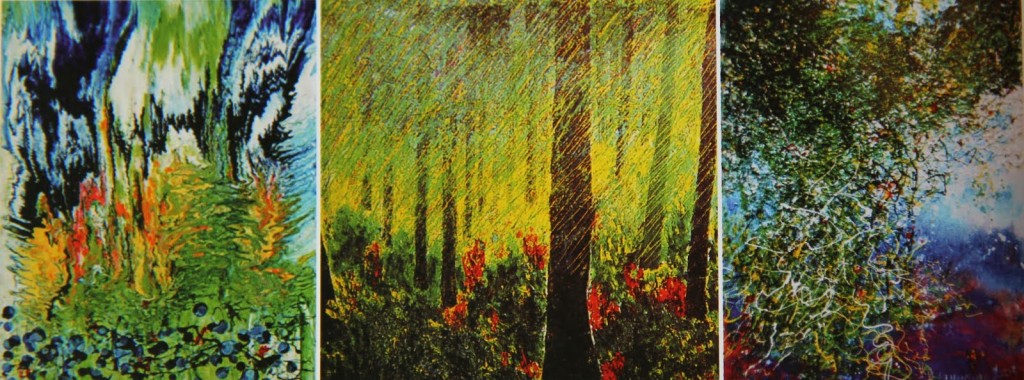
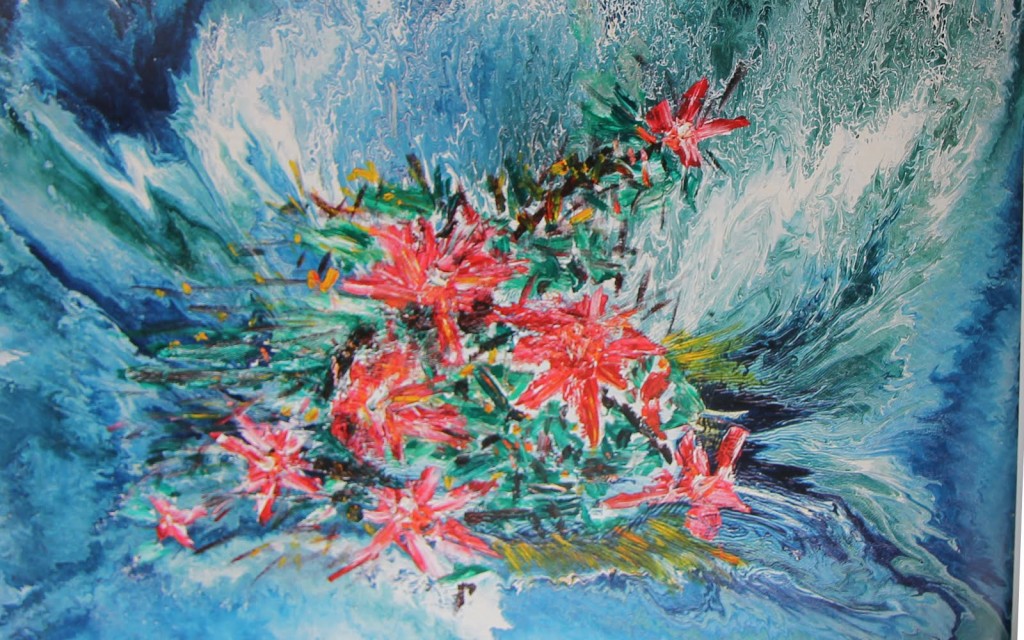
Hongtao Li is one of those people who transcends time and place. His art graces museums and art galleries all over the world. He is the first Chinese artist to have his works showcased in Musee de Louvre in Paris. Political VIPs and Hollywood celebrities, as well as the general public, have a collection of his oil paintings in the modern and post-modern abstract style. Indeed, his art will endure through the ages.
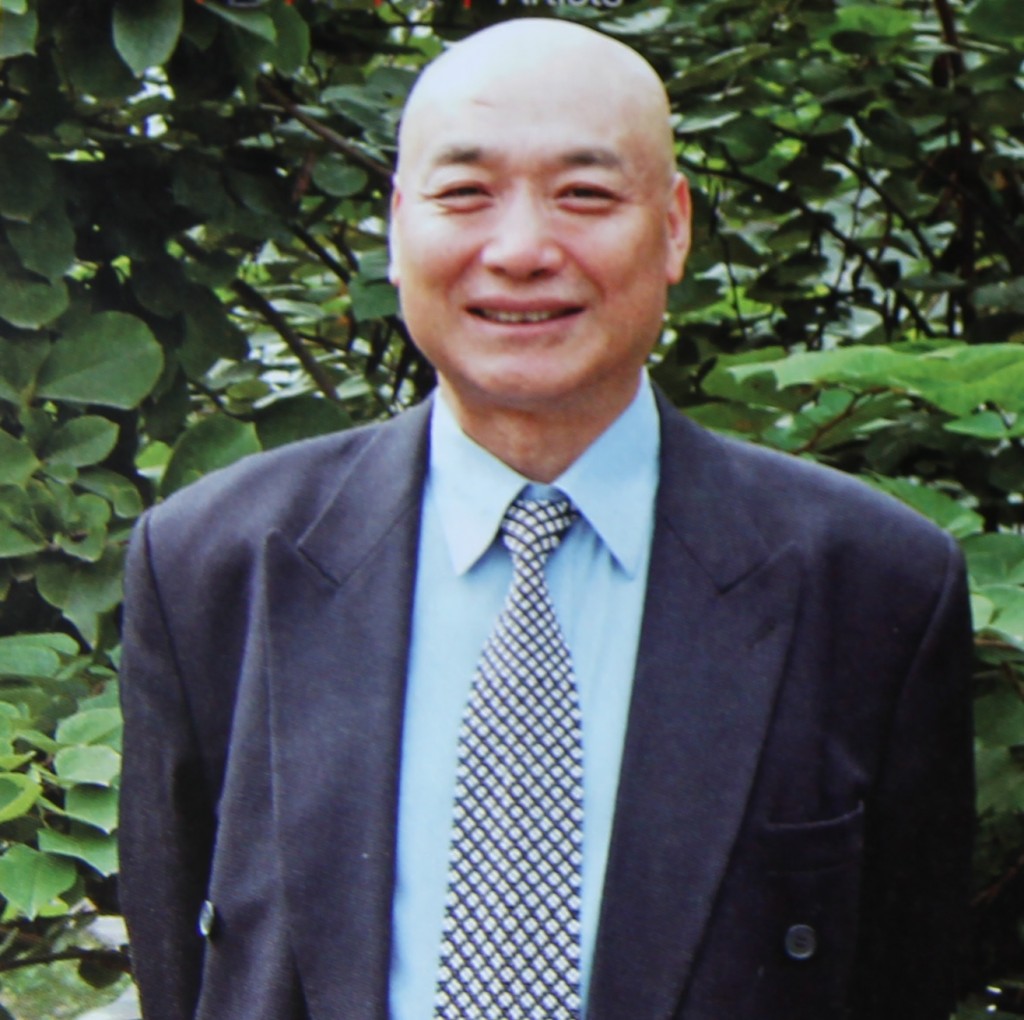
Doubtless his works affirm the truth: He was born to be an artist. He is mostly self-taught. His art, so timeless and universal in its theme–and in his words “still evolving”–is informed by wisdom gained from his culture, early adversities and also interaction with man and nature.
Li was born in Dalian, located in northeast China, according to the Wen Dao Journal website. At age ten, he started studying Qigong and other Chinese traditional medicine. (The wikipedia defines Qigong as a practice that cultivates and balances qi or chi, translated as intrinsic life energy.) When his father died, Li dropped out of school to support his four younger siblings and his mother, who was nearly blind. Li was influenced by his mother’s talents. He used to help her make and sell arts and crafts to earn income for the family.
His love for his family and his passion for his art (he was also a gifted tenor) saved him. He recalled: “I lost my father when I was 13. Before he died of cancer, my father left me a poetic letter. In one part, he said: ‘When your roof is leaking with continuous rain, when your sail is broken with a headwind coming, you grit your teeth and stay strong. The dark clouds will pass and the fine day will come soon.’ His words are forever etched in my mind.”
Li’ is known for using vibrant colors to evoke energy. The color, the light and the shadow, express what’s in the artist’s mind at the moment, he said. Color also can heal.
He added: “A painting is not just a decoration. A good painting always has a healing power. To me, the process of painting, like music, poetry and other art forms, is all about balance and harmony. That includes harmony of the internal body, mind and spirit and also harmony with your external environment. Some paintings can inspire and encourage you, give you a positive, uplifting feeling, pleasure and joy.”
Li noted about his art: “Most of my paintings are influenced by Chinese culture. This includes WuXing, the 5 stages of movement. Every line or dot or color of the painting represents the whole sense of movement. Also Taoism, Buddhism, Confucianism, the Chinese ancient classics I Ching and Nei Jing, and the 8 principles of Chinese medicine–yin and yang, warm and cold, internal and external, excess and deficiency.”
“In traditional Chinese painting, there was always an abstract and impressionistic freehand brushwork called PoMo,” he explained. “I’ve been influenced by this, as well as by Chinese calligraphy.”
Here’s his advice to aspiring artists: “Don’t just use your eyes to paint. Use your heart to paint. Don’t just focus on painting, but open yourself up to other arts and to the world. I’m also interested in history, poetry, calligraphy, and I interact with nature and other species. Be natural and express your own personal feelings.
“I use my imagination to visualize images, and then go beyond imagination to the abstract. There’s a famous Taoism saying–‘The greatest image has no shape.’”
UN Exhibit
Last March 26 to 29, the United Nations headquarters in New York exhibited 38 of his works. Li said he was very happy to have the opportunity to receive feedback from an international audience. Next month 80 paintings will be presented in Atlanta, sponsored by the Coca-Cola Corporation. Every year, the company showcases international artists. Li is the first artist featured from China. The exhibit runs on May 1-31.
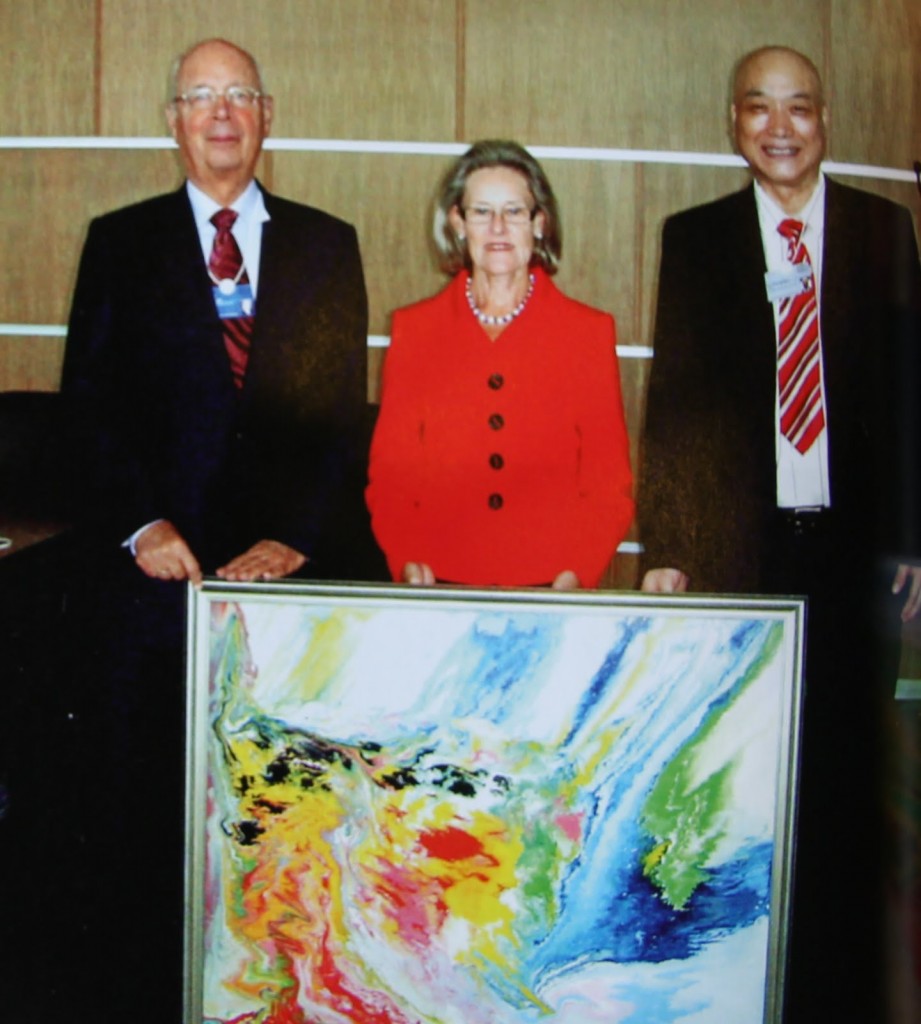
The UN exhibit’s theme was “The Greatest Image Has No Shape.” It is taken from a Taoist philosophy. Qi has no shape, he said, adding, “The shapeless image can hold the greatest meaning because the core of Qi is there.”
Observed Li: “Harmony is everything, everything requires harmony and balance. In Chinese philosophy, too cold will lead to freezing, too hot to burning. A state ultimately turns into its opposite if you go to the extreme. Just like in painting, too heavy or too light a color can destroy the overall harmony. Artistic harmony requires a balance of color.”
Li assembled a collection based on balance and harmony. They mostly represent his recent style, in which he is weaving in more influence from traditional Chinese landscape painting: “I’m aiming for a rich, balanced palette of colors. I have painted 500-600 total paintings, but very few with which I’m fully satisfied.”
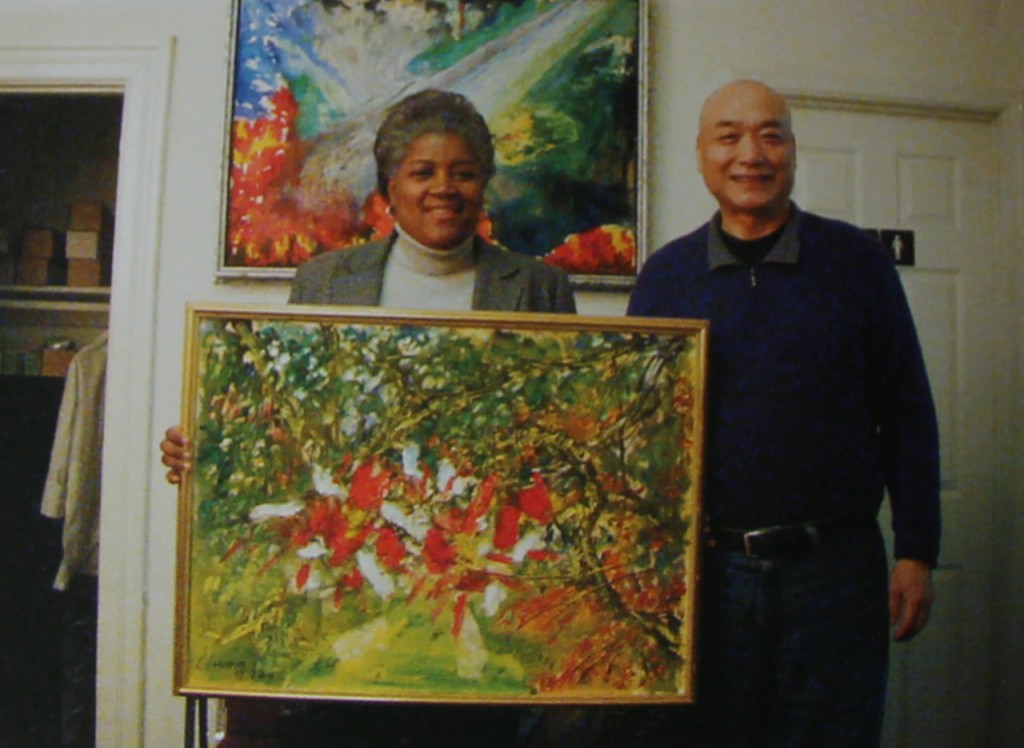
Life and Art
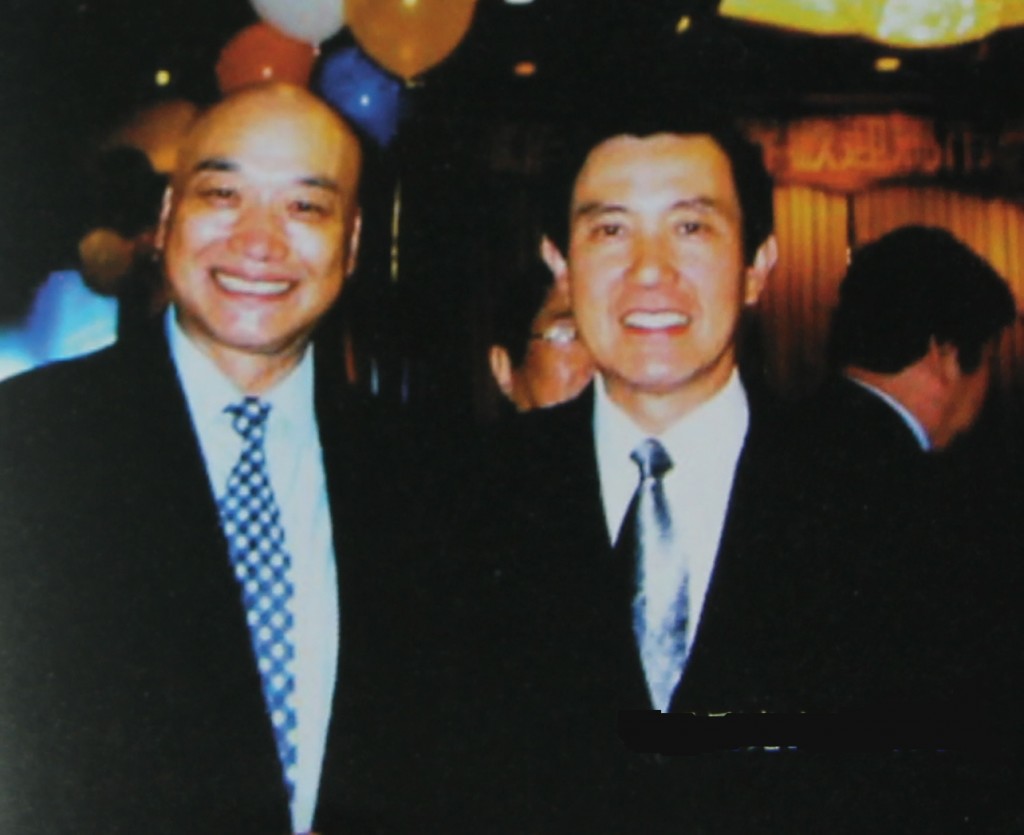
In featuring Li, his art and his exhibits, Asian Fortune is celebrating this extraordinary artist. Jasmine Ma expertly translated the interview, including the excerpts that follow.
Did you get the talent to paint from your mother? Or your father?
I was influenced more by my mother. She liked jianzhi, the Chinese folk art of paper cutting. She also drew folk art. But I never received professional training.
What paintings by your favorite artists do you have in your collection?
I like a lot of artists and I used to collect many ancient Chinese artists. I like a number of American painters, including Braque, De Kooning, Kandinsky, the French Chinese abstract painters Zhao Wu Ji and Zhu De Quen. I also like European masters Picasso, Van Gogh, Monet and Rousseau and Chinese painters Gu Kai Zhi, Bada Shanren, Qi Baishi, Zhu Da. All of them have their own unique creativity.
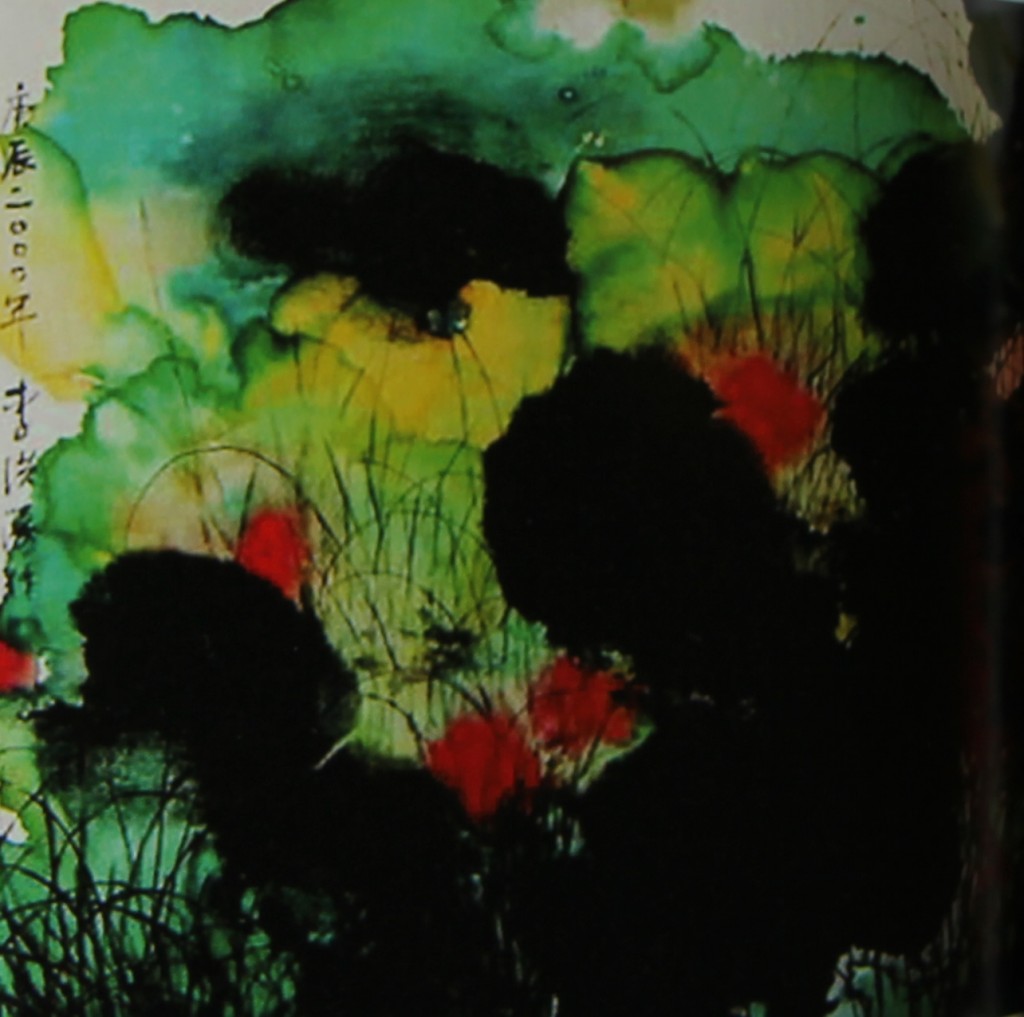
How has success changed you? Or it didn’t change you? You still like the same simple things in life? The same food?
It’s not about success. Nothing has changed for me. I like to eat a wide variety of foods. I choose what to eat based on my health, the season, the climate. And color matters in my diet, too! I learned to cook professionally when I was a teenager, working in a restaurant. I like to cook from scratch, using foods directly from nature and my own backyard–dandelions, wild plants, tree leaves, and vegetables and fruits I grow myself.
You’re a healer. How do you heal people through your paintings?
The color, the light and the shadow, express what’s in the artist’s mind at the moment. Color also can heal. A good painting can affect the hormones and stimulate or enhance one’s immunity.
Color has a healing energy which influences the energy of the internal organs. In Chinese medicine, the common five colors represent the major internal organs. Red is related to the heart and small intestine, yellow to the stomach, spleen and pancreas, white to the lungs and large intestine, black to the kidney and bladder, green (sometimes blue) to the liver and gall bladder.
The viewers’ level of appreciation also depends on his or her own individual energy in relation to the energy emanating from the color. Of course, other factors like personal background, personality, culture, etc., come into play. But the color and image draw or repel a person, based on his or her internal conditions and needs.
Appreciation of a painting, especially an abstract one, requires not just observing the image, but also using your heart to feel the energy behind the painting. A painting always imparts what the artist feels and wants to express at that moment, and can affect people’s mind, mood, health, even physical feelings. Van Gogh is famous for using his paintings to convey his mood and feelings.
You’ve had a difficult life. How has painting healed you?
When I immerse myself in painting, it heals me. It puts me in a state of comfort and peace, and when I’m in that meditative state, my mind moves freely, and I can express my feelings. My paintings evoke positive, open energy.
What you do before starting to paint? Do you meditate, pray?
Painting itself is comforting and cleansing for the soul. I sometimes meditate or practice Qigong, but not for the purpose of painting. Painting itself is a kind of meditation for me.
I have studios in China, Maryland and D.C. Whenever something comes into my mind, night or day, I’ll jump up to paint, even in the middle of the night.
What are your plans for the future?
Recently, I’ve been changing my style slightly, interweaving Chinese Pomo landscape brushwork painting style more into my work. I’m planning additional exhibits beyond the one at the UN.
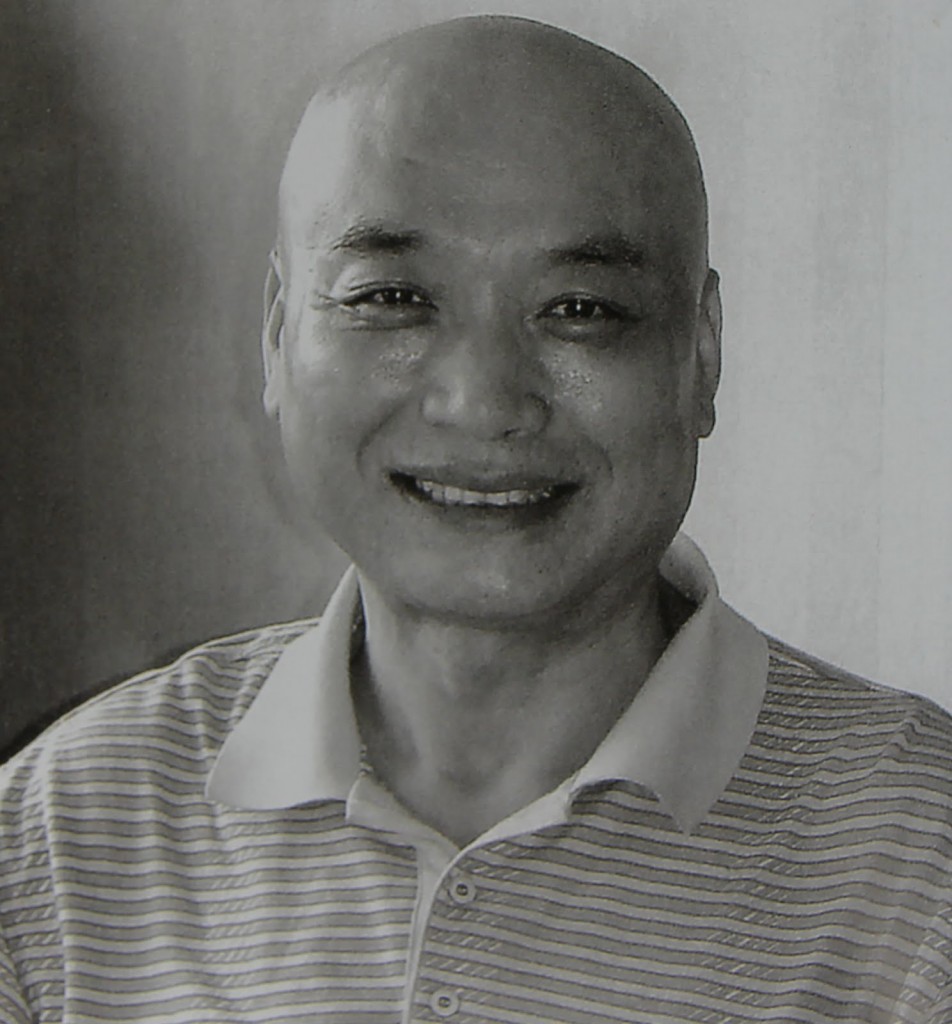
Please share something about your personal life. Married?
I’ve been divorced since 1995 and haven’t married again, nor do I have any children. But I am happy–I have many friends and painting is my lover.
Any Chinese saying or proverb that serves to inspire you in your personal life?
My personal principle and painting principle are the same, derived from the principles of yin and yang: The greatest image doesn’t have to have a certain shape or pattern.
 Asian Fortune Your source for all things Asian American
Asian Fortune Your source for all things Asian American

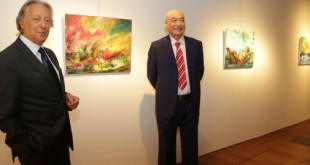

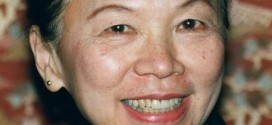
One comment
Pingback: Hongtao Li’s Art: Celebrating Balance, Harmony | Asian Fortune | art and healing Blog